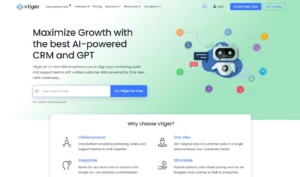Measuring The Success And Effectivity Of Email Marketing

Email marketing has become one of businesses’ most popular digital communication methods recently. But how successful is it?
Does email marketing offer a return on investment, or is it just a time-consuming effort with little reward?
In this article, we’ll explore the successes and failures of email marketing to see if it’s worth it for businesses. We’ll look at strategies, success rates, cost-effectiveness and more to determine whether your business should avail itself of this marketing channel.
How Do You Benefit From The Power Of Email Marketing?
Email marketing is a powerful tool that has revolutionised how businesses interact with their audience. With email marketing, companies can reach out to customers and potential clients cost-effectively and efficiently.
Email marketing allows businesses to create personalised messages tailored to their target market, making it easier for them to connect with their customers on a deeper level.
One of the biggest benefits of email marketing is its ability to drive sales. Businesses can increase conversions and generate more revenue by sending targeted emails with special offers or promotions.
Additionally, email marketing helps build brand awareness by keeping your business top-of-mind among your subscribers. This constant communication ensures that customers are always aware of what you offer, which can lead to repeat purchases in the future.
Another advantage of email marketing is its ability to provide valuable insights into customer behaviour.
How Do You Measure The Effectiveness Of Email Marketing?
Simply sending out emails is not enough; it is essential to measure the effectiveness of email campaigns regularly.
One key aspect of measuring email marketing effectiveness is the open rate. This metric tracks how many recipients opened an email after receiving it.
A high open rate indicates that your audience found your subject line and content compelling enough to take the time to read it. On the other hand, a low open rate suggests that you need to improve your subject line or offer more relevant content.
Another critical factor in measuring email effectiveness is click-through rates (CTR). CTR tracks how many people clicked on links within the email after opening it.
Tools
Marketers must measure the effectiveness of their email campaigns and use data to optimise future efforts. Fortunately, there are many tools available that can help businesses do just that.
One such tool is Google Analytics, which allows marketers to track email open rates, click-through rates, and conversion rates. With this information, businesses can determine which types of content resonate best with their audience and adjust future campaigns accordingly.
Another useful tool is Mailchimp‘s A/B testing feature, allowing businesses to test different subject lines or send times to see what leads to higher engagement.
Finally, tools like Litmus provide valuable insights into how emails appear across various devices and email clients. This ensures that emails are optimised for all users regardless of their device.
Effective Email Marketing Campaigns
Email marketing is one of the most effective ways to reach customers and promote products or services. However, not all email campaigns are created equal. The key to success lies in creating effective email marketing campaigns that grab the recipient’s attention and encourage them to engage with your brand.
Traffic Generating Email Marketing Campaigns
Email marketing campaigns can be an effective way to generate traffic to your website. When executed properly, email marketing campaigns can drive high volumes of targeted traffic that is more likely to convert into paying customers. The key is to create personalised and engaging content that resonates with your audience.
One important aspect of a successful email marketing campaign is having a strong call-to-action (CTA). Your CTA should be clear and specific, encouraging readers to take action, such as clicking through to your website or subscribing to your blog.
Another tactic for driving traffic through email marketing campaigns is offering exclusive promotions or discounts. This increases the likelihood of recipients opening the emails and incentivizes them to visit your website and make a purchase.
Lead Nurturing Email Marketing Campaigns
Email marketing is essential for businesses looking to generate leads and build relationships with their audience. One of the most effective ways to leverage email marketing is through lead nurturing campaigns. These campaigns are designed to engage potential customers at every stage of the buyer’s journey, from initial interest to closed sale.
The key to a successful lead nurturing campaign is relevance. By sending targeted messages that speak directly to the needs and interests of your prospects, you can increase engagement and conversion rates.
Start segmenting your email list based on demographic data, behaviour, or other relevant factors. This allows you to create tailored content that resonates with each group and moves them closer towards a purchase decision.
Another important element of lead nurturing campaigns is automation. Rather than manually sending individual emails, use an automated system that triggers different messages based on where a prospect is in the buying process or how they interact with your website.
Revenue Generation Email Marketing Campaigns
With more than 3 billion people using email worldwide, it is no surprise that email marketing generates $44 for every $1 spent. However, not all email campaigns are created equal. To maximise revenue generation from email marketing campaigns, businesses must understand the key factors contributing to success.
First and foremost, successful revenue-generating email campaigns know their target audience.
They clearly understand their customer’s preferences and pain points and use this information to create content that resonates with them.
Personalization is also key – emails that address the recipient by name and offer personalised recommendations or promotions see higher engagement rates.
Second, timing matters when it comes to revenue-generating email campaigns.
Conclusion
In conclusion, email marketing is an effective tool for connecting with customers, generating leads and conversions, and increasing brand recognition.
With the right strategies in place, it can be a powerful instrument for growing businesses of all sizes.
Email marketing should not be overlooked as a viable promotional tool but should be leveraged to its full potential.
Companies should take the time to analyse and understand their customer base, craft compelling content, and properly segment lists to maximise the effectiveness of their campaigns.
FAQs
How long do email campaigns last?
Email marketing is still the most popular marketing channel for businesses. Email campaigns have an average life span of 4-6 weeks, but it is not uncommon to see them last up to a month.
The length of your email campaign depends on your objectives and how you want your audience to interact with you via email. Some companies may want their audience to open their emails immediately, while others may want them to open after a few days or weeks of receiving the email.
What are the best time frames to send emails?
Email marketing is an effective tool to reach your customers and increase sales. However, it has been proven that sending emails too early in the morning or late in the evening can harm your business.
The best time frames for sending emails are between 9-11 am and 3-6 pm. Sending emails during these hours will help you get the most out of your email marketing campaign.
What are some of the challenges of email marketing?
Email marketing is one of the most effective ways to reach your target audience. However, it cannot be easy to get a response from your customers if they are uninterested in what you say.
Some of the challenges that email marketers face are:
– Sending out too many emails and getting little or no responses
– Getting spam complaints from email service providers





